4 Dryland Options When Pool Time is Limited
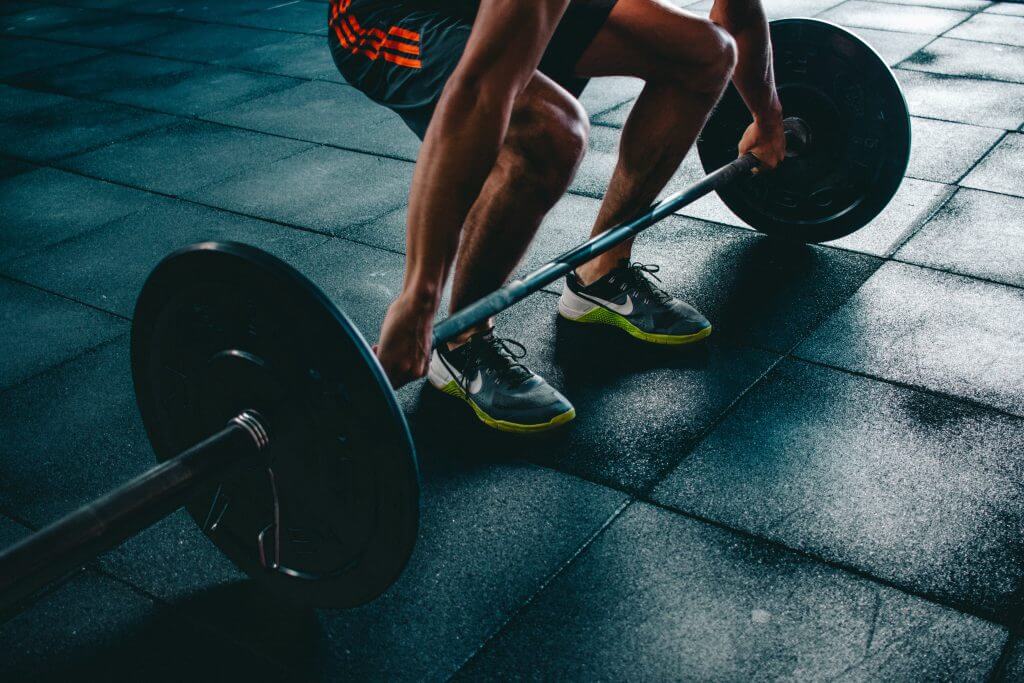
Mac Robertson, Swimming World College Intern.
Swimming is a sport that requires a a daily, relentless commitment. Although your body needs time to recover, missing practices can be detrimental to accomplishing your long-term goals. Being in the water as consistently as possible requires a lot of dedication and sacrifice.
However, sometimes there are those days when you’re forced to miss practice – whether that be a vacation, family event or injury. Michael Phelps revealed that he missed quite a few practices leading up to the 2012 London Olympic Games. This ended up costing him, as he finished outside of a medal position in the 400-meter IM. Would the outcome have been different if he had found time for dryland workouts on the days that he missed practice?
Many swimmers don’t know what they can do to stay fit on days they can’t make it to the pool. Luckily, there are various dryland exercises that can help keep your body in shape in addition to getting pool time. Here are four different dryland options that can keep you fit while you are out of the water.
1. Battle Rope Exercises
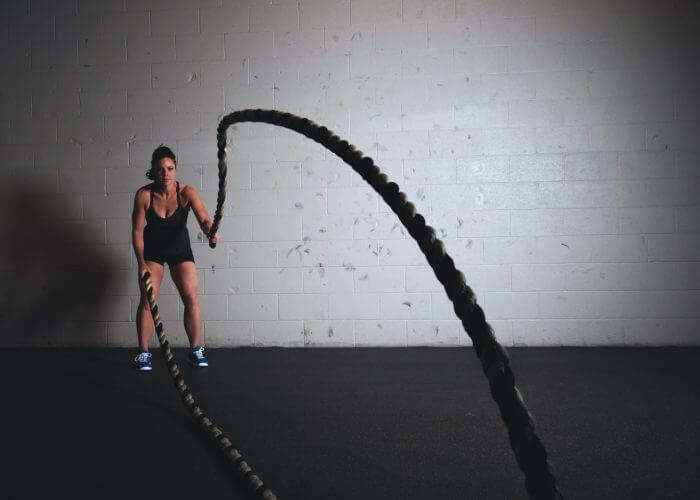
Photo Courtesy: Scott Webb
Rope exercises include overhead climbing, double arm waves, double arm slams and many more. Jason Dierking, the assistant director of Olympic Sports Performance at the University of Louisville, says: “At Louisville we have our swimmers climb rope and do other rope exercises as well as pushups with various different grips.”
Rope work can be a full body exercise if you do the proper movements. The posterior chain and core are activated in addition to the upper body, and you can incorporate lunges and other movements to increase the challenge.
2. Weightlifting
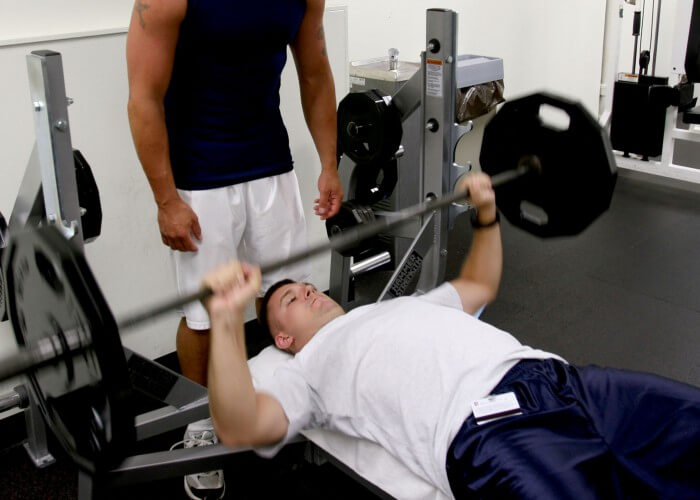
Photo Courtesy: Lance Cpl. Ronald W. Stauffer
Weightlifting is an easy way to build muscle as well as endurance needed for the pool. The correct areas of the body need to be targeted so that you’re not building bulk for bulk’s sake. Stew Smith, a military fitness trainer, advises that back muscles, biceps, shoulders, and triceps must be the primary targets for swimmers.
Using moderate weight and doing a lot of repetitions helps to build the greatest endurance in your muscles. Typically, endurance lifting will include between 10 and 25 reps of an exercise. You can calculate a moderate weight range or go by feel. Typically, light-to-moderate weight is equal to 60 to 75 percent of your one rep max, or maximum amount of weight you could lift on one rep in a certain exercise.
Four lifts that help build muscle in the upper body include bent-over rows, bicep curls, bench press and lat pull-downs. These can be done with a bar-bell or dumbbells.
3. Cardio-Focused Exercises
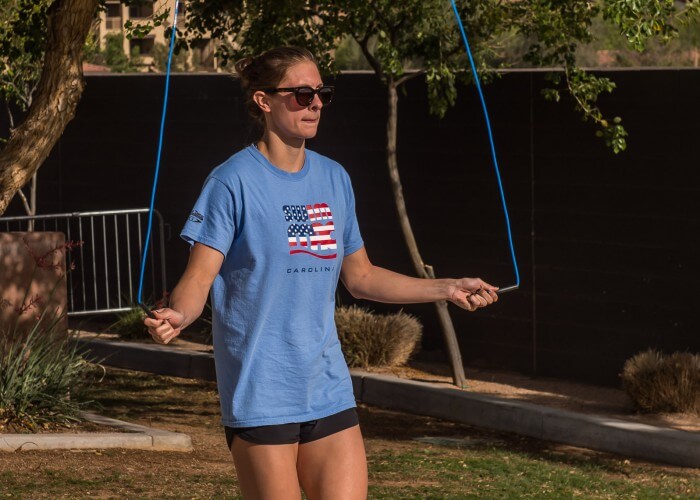
Photo Courtesy: Peter H. Bick
Although building muscle in the weight room can help keep you fit and strong, the aerobic aspect of swimming must be maintained as well. Each week in practice, you push your body to its absolute physical limits, using all energy systems.
Missing practice takes away from building your ability to push as hard as possible. It is essential to try and sustain the cardiovascular component of fitness when you are out of the water. Going for a jog can help you maintain that aerobic base; however, most swimmers have a poor relationship with running and don’t last long.
The good news is, there are several other ways to work your aerobic system! Dierking suggests that jumping rope and shadowboxing can help swimmers gain in cardiovascular fitness – and it keeps the mind engaged in a new activity. Jump ropes are relatively cheap and easily transported during travel, and YouTube has several free jump rope workouts to follow along! Shadowboxing also keeps your heart rate up while using just your body weight and no equipment.
4. Stretching
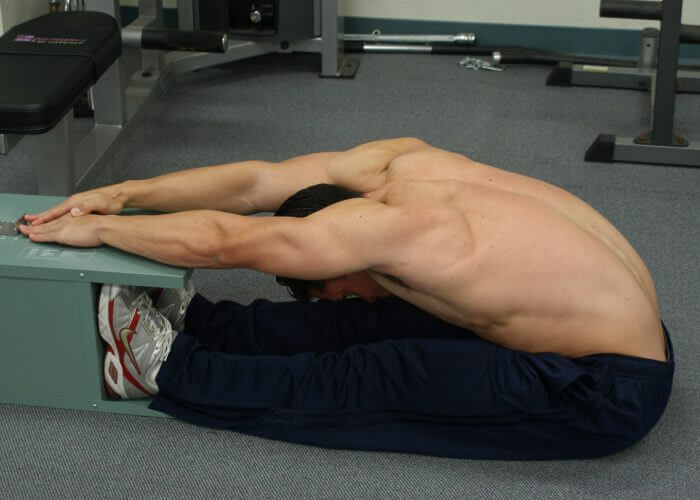
Photo Courtesy: G. John Mullen
Stretching outside of practice can be one of the most important aspects of the sport. Through utilizing different types of stretching, you can increase your range of motion as well as prevent injury. Being out of the water can create the perfect opportunity to increase your flexibility, lengthen your muscles and keep the blood flowing. The stretches should target the shoulders, quadriceps, groin, chest (pectoralis major), and upper back (latissimus dorsi and trapezius) areas.
Missing practice can happen from time to time. Instead of doing nothing for that day or week, find time for dryland workouts to ensure that you will stay in peak condition for the next practice.
Commentary: All commentaries are the opinion of the author and do not necessarily reflect the views of Swimming World Magazine nor its staff.




Jumping rope is a great way to keep your cardio up. LiftBro has some great jump ropes at attractive prices. (www.liftbroathletics.com)